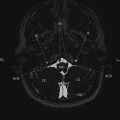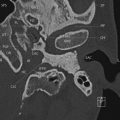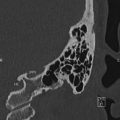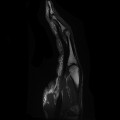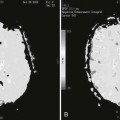and Jan Žižka2
(1)
Department of Radiology, University Hospital Hradec Králové, Hradec Králové, Czech Republic
(2)
Department of Radiology Faculty of Medicine in Hradec Králové, University Hospital Hradec Králové Charles University in Prague, Hradec Králové, Czech Republic
As the anatomy of the temporal bone comprises of very small structures, high spatial resolution imaging techniques are a prerequisite for adequate diagnostic results. For several decades, the effort has been aimed at maximizing the spatial resolution as well as minimizing the image noise.
1.1 MDCT
In case of high-resolution CT (HRCT) of the pyramids, the scanning protocols were traditionally associated with relatively high radiation doses (e.g. effective tube current–time product of 320 mAs and peak tube voltage of 120 kVp), yielding up to 75 mGy of volume CT dose index (CTDIvol). These scanning parameters were comparable or even exceeding those of routine CT head scanning protocols. Moreover, protocols based on 140 kVp tube voltage settings commonly exceeded CTDIvol values of 90 mGy, thus further increasing the radiation load near/in the area of the eye lens which is the most endangered organ in terms of radiation damage in adult head CT scans. It should also be noted that the vast majority of current helical MDCT head scanning protocols do not employ or even do not allow gantry tilt. The eye lens is therefore regularly exposed to the primary beam in both head and temporal bone MDCT scanning procedures. Furthermore, on conventional as well as multidetector CT scanners equipped with less than 16 rows of detectors, head CT scans were routinely acquired separately from HRCT studies of the temporal bones, thus virtually doubling the radiation dose to the eye lens.
According to the latest statement on tissue reactions issued by the International Commission on Radiological Protection (ICRP), the threshold in absorbed dose for the eye lens was lowered from 2.0 to 0.5 Gy in order to minimize the risk of radiation-induced cataract development.
Whereas the radiation protection measures and ALARA (“as low as reasonably achievable”) principles urge us on minimizing the radiation dose, the abovementioned scanning strategies and continuously increasing numbers of CT procedures worldwide act in contradiction.
Stay updated, free articles. Join our Telegram channel

Full access? Get Clinical Tree


